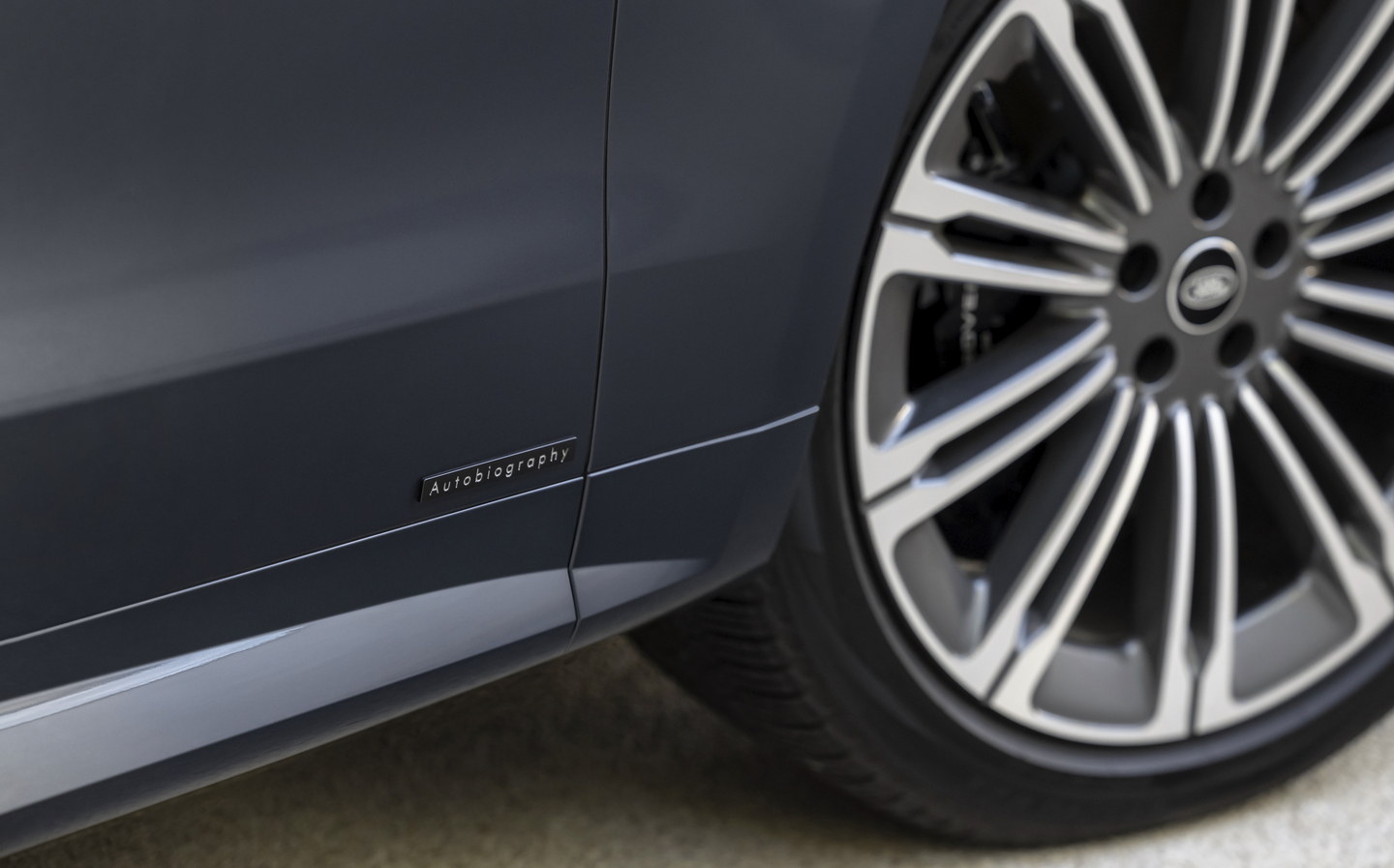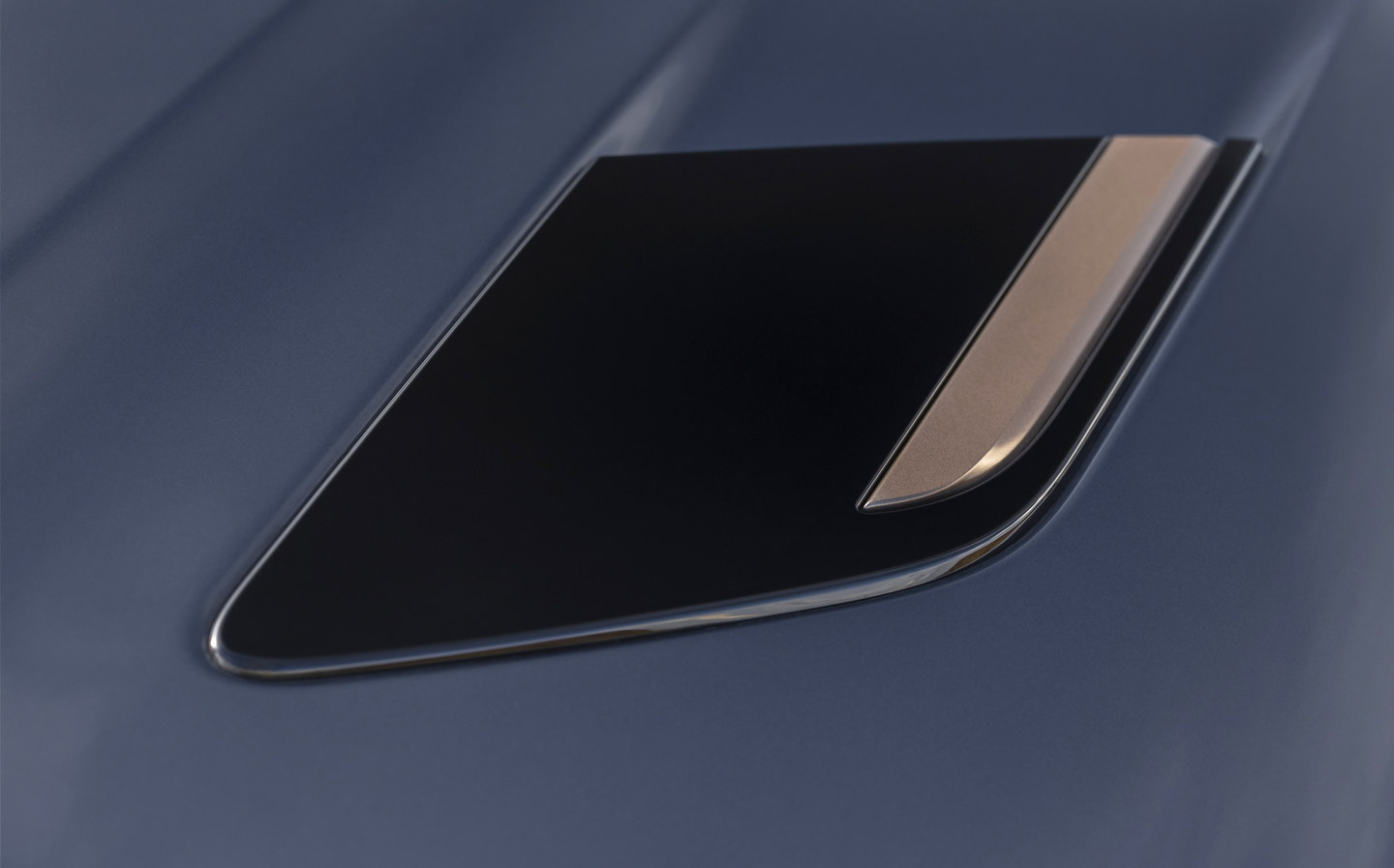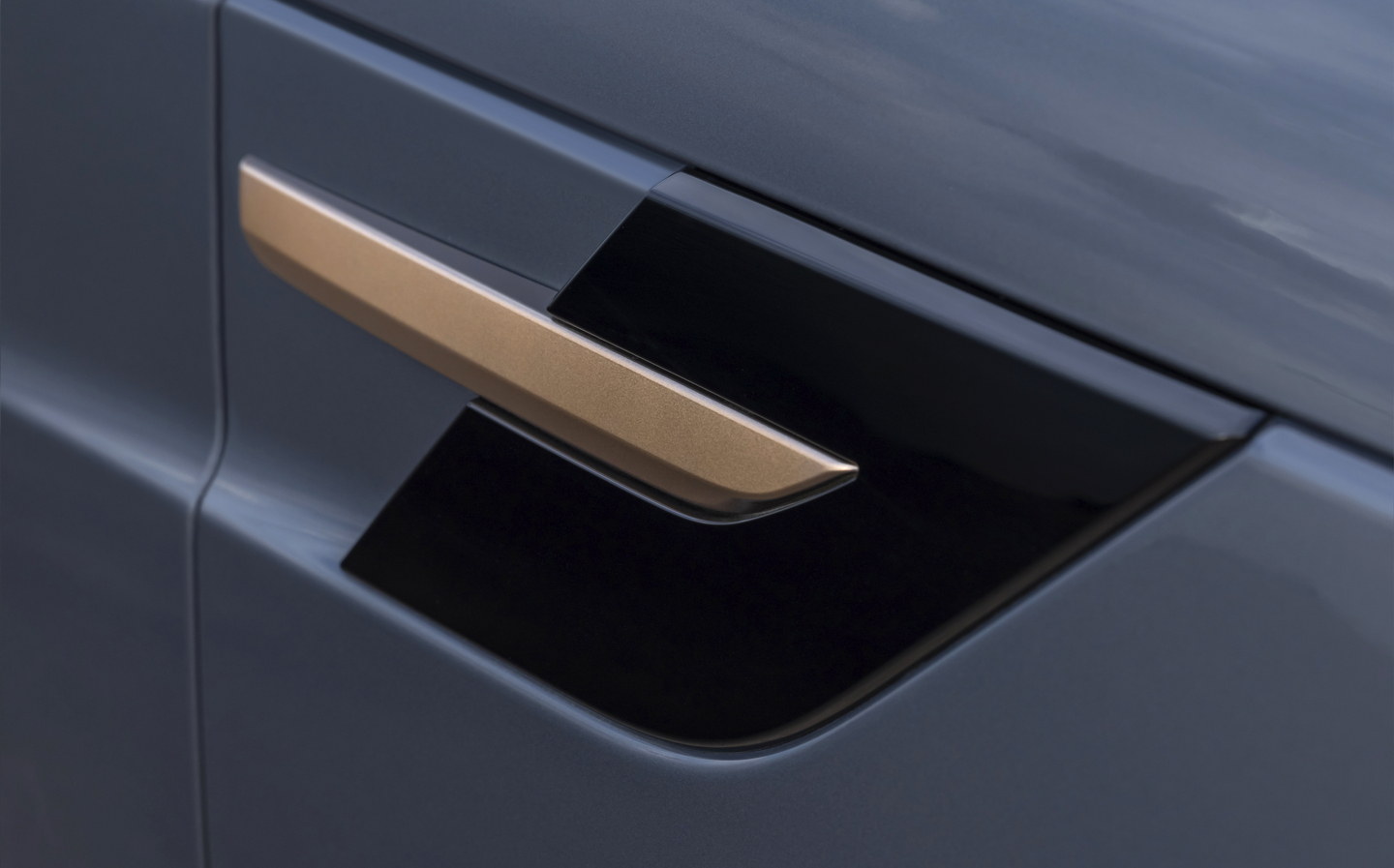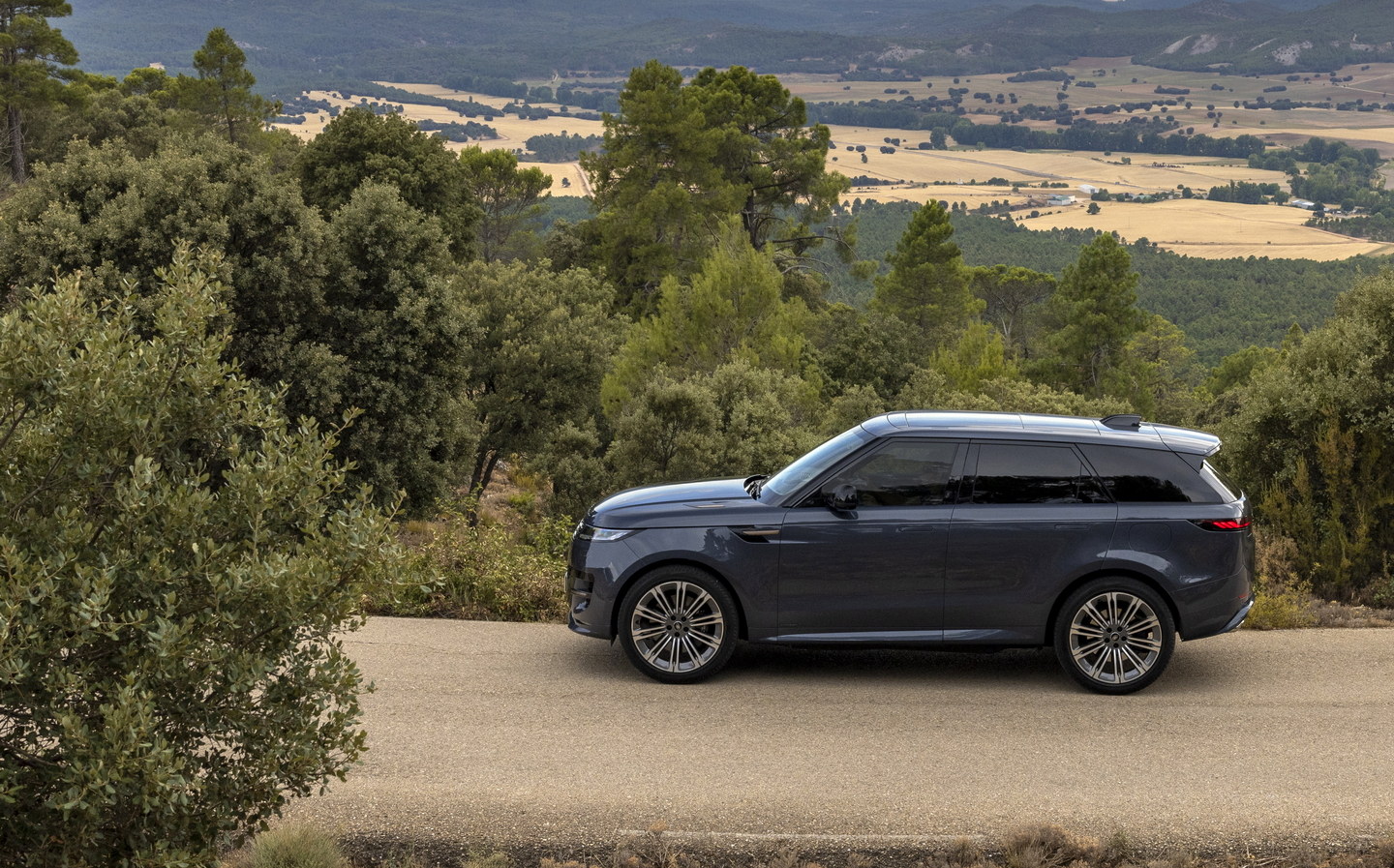Range Rover Sport P510e PHEV review: Half-electric, all Range Rover
Half-electric, all Range Rover
The Range Rover Sport, which as the name suggests is a sportier version of the luxury Range Rover SUV, has been a massive success for Land Rover ever since the first version was launched back in 2004.
Indeed, at times, it has been the dominant profit centre for the company and, given Jaguar Land Rover’s recent promise to move towards making more high-end, high-profit vehicles, that is unlikely to change.
What has changed is that the Range Rover Sport now comes with plug-in hybrid power that, as with the new Range Rover PHEV that launched recently, promises a long electric range that means both cars go from being the high-consumption bad boys of the Land Rover line-up to potentially quite eco-friendly models.
The Range Rover Sport, particularly, has the potential to be one of the most economical and practical models that the brand sells.
Exterior design and rivals
In styling terms, the new Range Rover Sport carries on where the previous model left off and follows the lead of other models — chiefly the Velar and Evoque — in having styling that is more pared back and minimalist than before.
There’s a lack of the sort of sudden lines and swoops that you’ll find on many of its rivals, and the Range Rover Sport looks all the better for it. The only danger is that because the styling is so toned down and changes so subtle, it’s both difficult at a glance to tell it apart from the previous model and might be considered slightly bland from some angles.
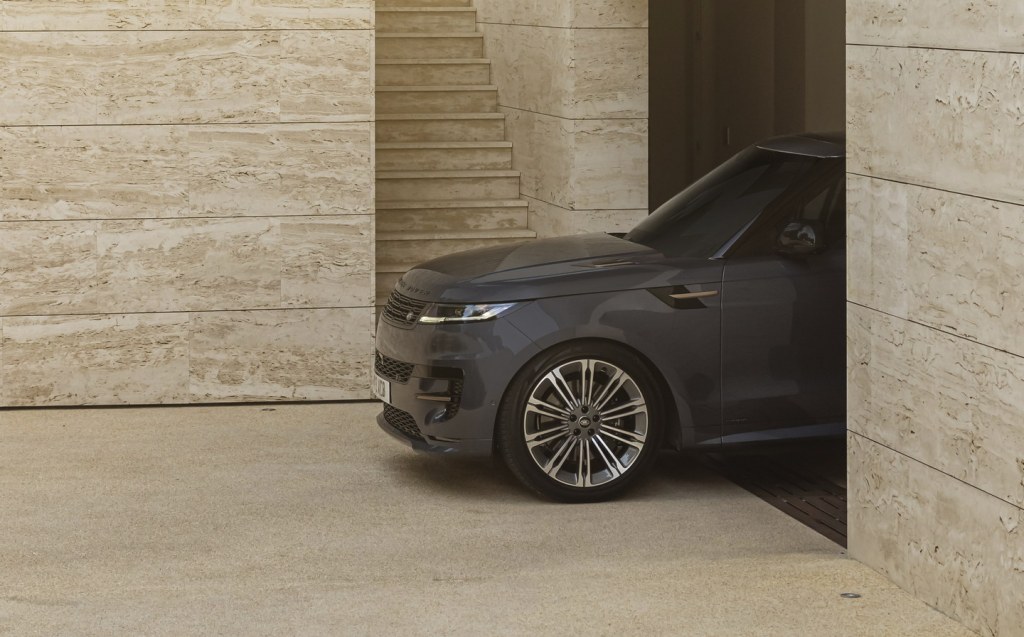
The nose is all-but identical to that of the larger Range Rover, a car with which the Sport shares all of its largely-aluminium structure and its engines.
Around the back, the two cars are more obviously different — the Range Rover gets carefully hidden vertical brake lights and a split tailgate, whereas the Sport gets horizontal brake lights — meant to give it a wider, more ‘planted’ look — and a single clamshell tailgate. Of the two, it’s the larger car that looks the more elegant.
For all that, the Range Rover Sport is a better-looking, more cleanly handsome car than many of its key rivals such as the Porsche Cayenne Coupé, BMW X5 and X6, and Mercedes-Benz GLE all look less immediately desirable than the Sport. Only the sleek Audi Q8 can hold a stylistic candle to this Range Rover.
Interior and practicality
The Range Rover Sport’s cabin is largely similar to that of the larger Range Rover. They share the seats, dashboard, trim materials, switchgear and digital screens. But there are, of course, some key differences.
The Range Rover Sport uses a smaller three-spoke steering wheel compared to the Range Rover’s four-spoke version, and the Sport’s roof is some 50mm lower than that of the Range Rover, creating a noticeably more intimate interior ambience.
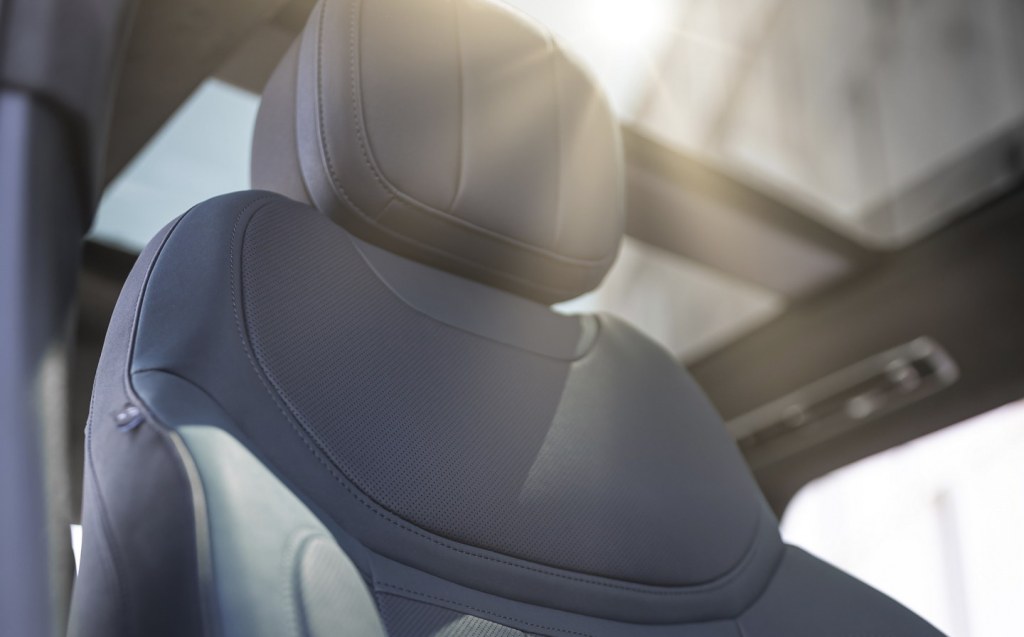
While the Sport is slightly more than 100mm shorter overall than the Range Rover, it shares the same 2,997mm wheelbase (the distance between the front and rear axles) as the standard version of the bigger car.
As a result, cabin space is vast and rear legroom in the Sport is basically the same as in its plusher sibling, meaning even the tallest rear-seat passenger shouldn’t lack for kneeroom.
Yes, the roof is a bit lower, but even so headroom remains ample and it’s only if you’re trying to fit a third adult-sized passenger in the centre of the rear seat that you might struggle.
The boot is impressively large, although Land Rover’s insistence on quoting the volume as loaded to the roof does give the Sport an over-sized, on-paper measurement of 835 litres. In daily use, loading to the luggage cover, it’s not quite that commodious, but still usefully large.
Fold the back seats flat and do you have a vast 1,860-litre load space to play with, of course. The standard-fit air suspension means that the rear of the car can be lowered, using switches in the boot, if you need to load something particularly heavy.
In spite of this being a plug-in hybrid model, the battery is packaged under the floor of the cabin so there’s no reduction in boot space compared to a petrol or diesel version. That’s an improvement on the previous Range Rover Sport PHEV that we tested over six months (read the extended test here).
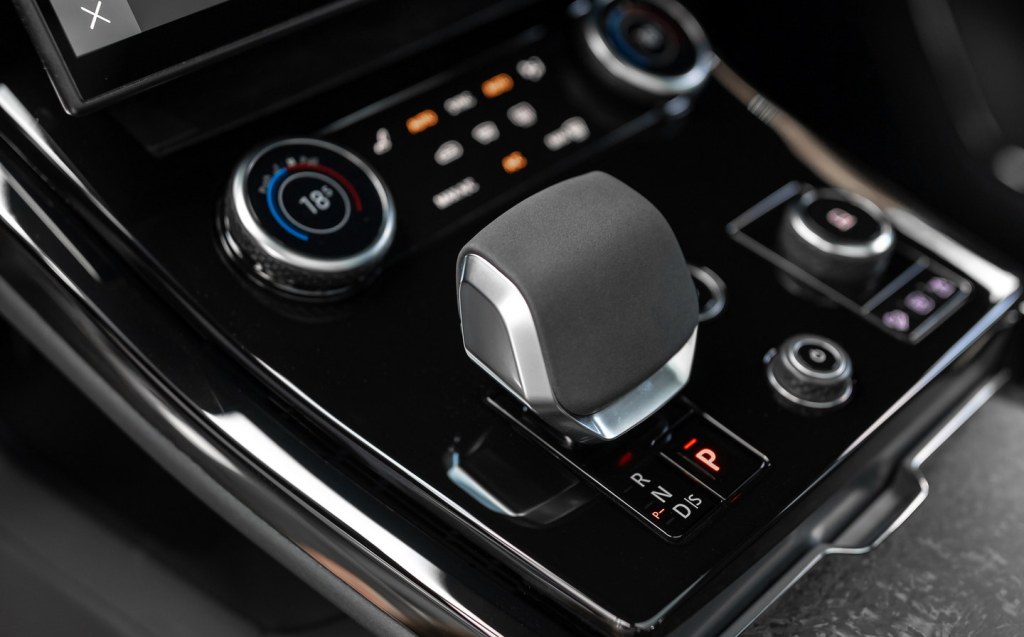
This new Range Rover Sport is notably less practical than the previous model in that you can no longer buy it with seven seats, even in petrol or diesel form (it was never a seven-seater as a plug-in). Land Rover’s plan is that those who need a third row will be directed towards a Discovery, Defender 110 or 130, or the long-wheelbase version of the bigger Range Rover.
Admittedly, the extra seats of the previous model were hardly the most spacious, and really only suitable for smaller children, but it does raise the question of whether this version might be less appealing to family buyers — a third row is handy not just for parents of multiple children but also transporting your children’s schoolfriends, or going somewhere with grandparents, for example.
In the front, you’ll not worry about comfort thanks to spectacularly plush seats (available with heating, cooling and massaging functions) and a cabin that’s largely well-made enough to be in keeping with a potential six-figure price tag.
The main surfaces, and in particular the wood trim panels, look and feel suitably rich, and the sheer softness of the seats takes some beating. There are some cheap plastics around, however, which can detract from the overall effect at times, but in marketing terms it does help mark it out from the more luxurious Range Rover, so you know exactly what you’re getting for the extra money.
It is practical up front, though, with multiple USB sockets, an open storage tray underneath the main centre console, more storage under the armrest (which as before can be optionally fitted with a fridge) and a again the signature cupholders that slide backward to reveal yet another large storage bin underneath.
The door pockets are also commodious, although they’re a long way down if you need to fish something out in a hurry.
Technology and safety
The Range Rover Sport’s cabin does away with most physical buttons and instead uses a pair of 13in digital screens — one for the instrument panel and one for the infotainment system — and some touch-sensitive panels below the big screen and on the steering wheel that allow for multi-function control.
The only physical buttons, really, are the stubby gear selector and the rotary switches for the cabin temperature and the Terrain Response system.
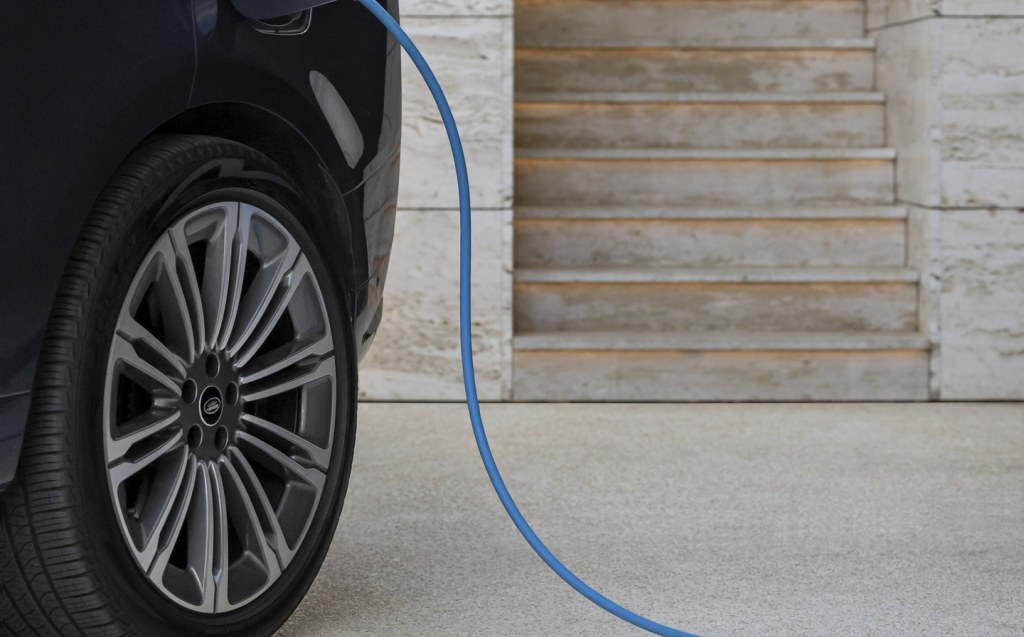
The main screen, running Land Rover’s latest Pivi Pro system, generally works very well — a massive improvement on the previous Touch Pro Duo — and looks pin-sharp and graphically-rich.
The menu layout is mostly logical, although some functions seem to take a little longer to find than others, and while the navigation mapping is clear (and the directions are repeated both in the instrument panel and on the head-up display, which is projected onto the windscreen) the navigation screen in our car seemed to ‘jitter’ at times, as if it couldn’t quite decide what to display.
Hopefully, such foibles can be fixed by software-over-the-air updates, which the car can receive through an extra, dedicated, aerial on the roof.
The most impressive on-screen functions are used when you venture off-road. Then, the big screen can display a torrent of information, including the angle at which the car is climbing or descending, the state of the locking differentials, the depth of standing water (the Sport can tackle water almost a metre deep with no modification, even with the PHEV powertrain) and the height of the suspension.
Most useful of all is the 3D surround camera view, which is not only great for helping you pick a safe route between rocks and boulders but also (and more importantly for more owners) will be helpful for judging exactly how far your expensive alloy wheels are from an adjacent kerb.
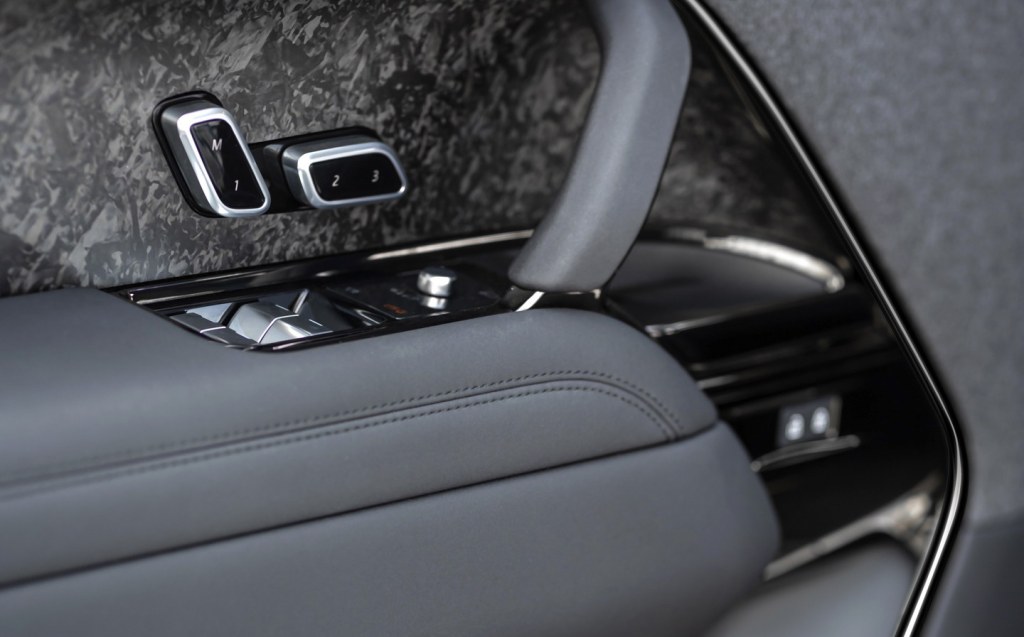
All new Range Rover Sports come with adaptive, radar-guided cruise control, automatic lane-keeping steering, emergency automated braking and a blind-spot monitor. Autobiography spec adds the all-round camera system.
The 2022 Range Rover Sport has not yet been tested by Euro NCAP but it’s likely to be a very safe car indeed, especially considering the strong performance put in recently by the related Land Rover Defender.
Performance, power, acceleration and electric range
You can have the Range Rover Sport with six-cylinder mild-hybrid petrol or diesel engines, or a range-topping 522bhp petrol V8. The most interesting versions, however, are the pair of plug-in hybrids.
The previous Range Rover and Range Rover Sport were available in plug-in hybrid forms, but the big difference here is the electric range. The new Sport comes with a 38kWh battery pack (the same size as the one in the pure-electric Hyundai Ioniq Electric), which gives it a theoretical range of up to 70 miles on electric power. That’s more than double what the previous version was capable of, and Land Rover claims it’s enough for most owners to cover 75% of their regular journeys on the battery.
The realistic daily range is probably closer to 50 or 55 miles, but that’s still very impressive. Assuming you have a driveway and a home or work charging point, from which the battery can recharge in five hours, you can essentially use this Range Rover Sport P510e as an electric car most of the time.
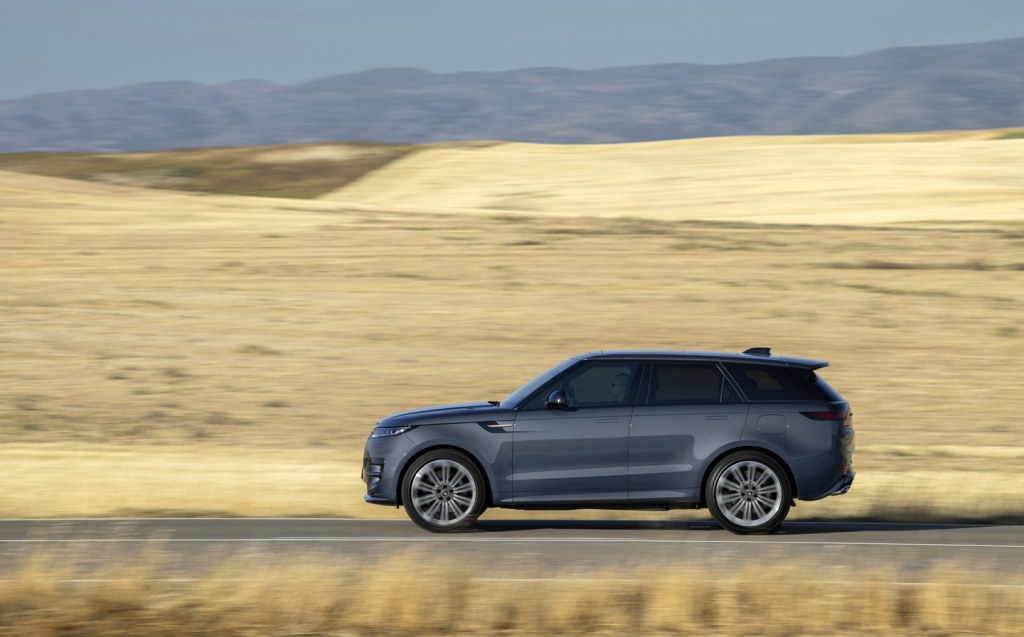
The 510 name refers to the car’s power output in metric horsepower, (that’s 503bhp) and it backs that up with 516lb ft of torque.
Unsurprisingly, performance is exceptionally good. Indeed, this most powerful hybrid model (there is a more affordable P440e version with 433bhp) is only a single second slower to 62mph from rest than the far more bombastic P530 V8 model.
That second is effectively meaningless in normal driving situations, and when you push down hard on the big accelerator pedal, the Range Rover Sport reacts with appropriate urge, and a pleasing rasp from its 3-litre inline six-cylinder petrol engine.
Cross country pace can be kept up effortlessly but the truly impressive thing is how economical it can be. Drive the Range Rover Sport P510e on a long journey with the hybrid battery run flat and it will average around 30mpg — about the same figure that you’d get from the 3-litre diesel model.
However, start a journey with a full battery, and run the car in hybrid mode, and it can be spectacularly economical. Over a mixed 90-mile route of mountain roads, motorways and city streets, the Range Rover Sport managed to average a solid 50mpg.
Not only that, but as a city-centre address had been programmed into the navigation as the destination, the hybrid system automatically preserved enough charge in the battery so that, once inside the low emissions zone, the journey could be completed on electric power.
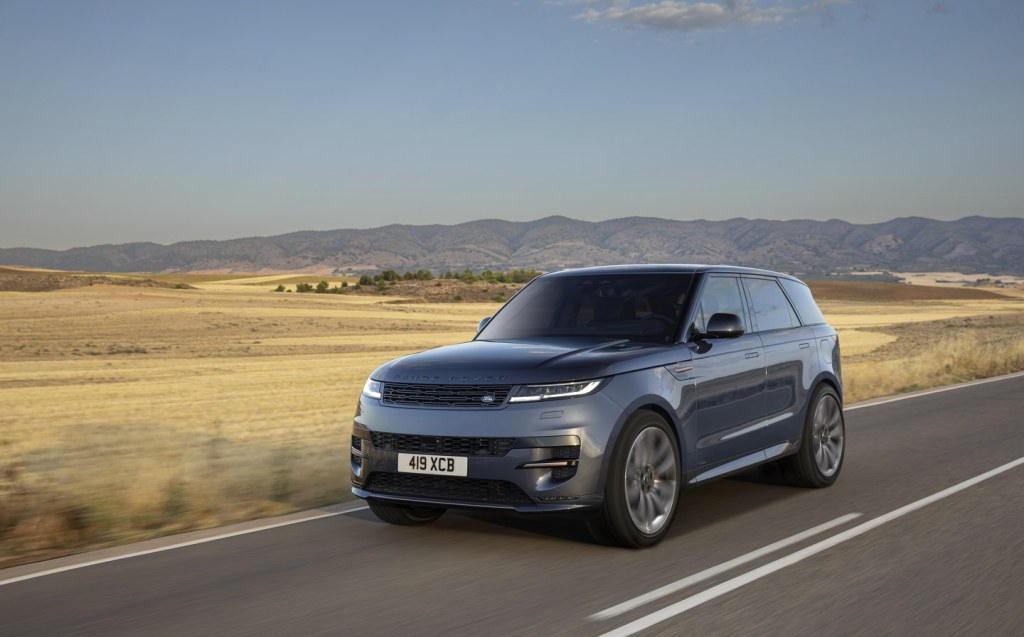
How economical the Range Rover Sport proves in real-world terms will depend entirely on how you use it, and critically how often you charge it up, but the potential for exceptionally good fuel economy is there.
Few will get near the 300mpg+ official figure, but the emissions rating of just 18g/km has obvious benefit-in-kind advantages to company car buyers.
Ride and handling
Although the Range Rover Sport does share all of its body structure and its powertrains with the larger Range Rover, there has been a clear effort to make the two cars feel different to drive.
In the main, they do feel similar in that they have the same sense of effortlessly gliding along when you’re cruising, the same well-controlled movements of the body when cornering and the same refinement and comfort.
This is mainly down to the new Range Rover, with its four-wheel steering and improved body control, becoming nimbler, though the Sport does still feel more agile and more responsive in corners.
That’s not just down to the roof being lower; the two cars are similar in weight but the main difference is down to the suspension.
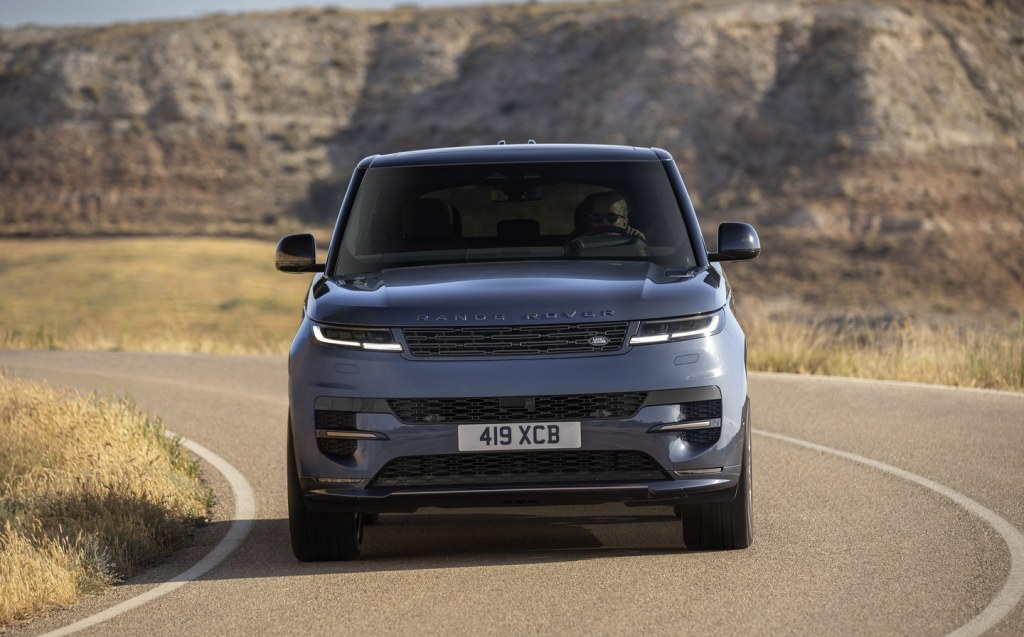
While the Range Rover uses single-chamber air springs, the Sport gets twin-chamber units, coupled with special dampers made for the car by Bilstein.
That’s aided by an optional system called Dynamic Response Pro. This uses hydraulic rams to compensate for body roll, keeping the Sport level even through a long, fast corner. There is a bit of body roll allowed, which actually helps you to better feel what’s going on, but the way the Range Rover Sport carves up and down a tight mountain road is really quite something. A car this big and this heavy really ought not to feel so nimble, yet it does. It’s very impressive.
Slightly less impressive is the ride quality. For the most part, the air springs keep everything calm but they struggle to deal with short, sharp bumps, and that is made worse by fitting optional 23in alloys. It’s likely that smaller wheels, with taller sidewalls on the tyres, would help, but the occasional large, loud wallop that comes up through the springs at times does detract from the car’s mission of providing a luxury motoring experience.
Its off-road prowess is unaffected by the change to a longer-range hybrid system. Indeed, the plug-in hybrid Range Rover Sport could be considered the best off-roader of them all, thanks to it being able to continue up rocky, dusty trails in torquey electric silence.
The air suspension stretches the ground clearance to beyond 270mm so that it can climb over obstacles and as ever, it’s far more capable off road than the majority of its owners will ever need.
Pricing and on-sale date
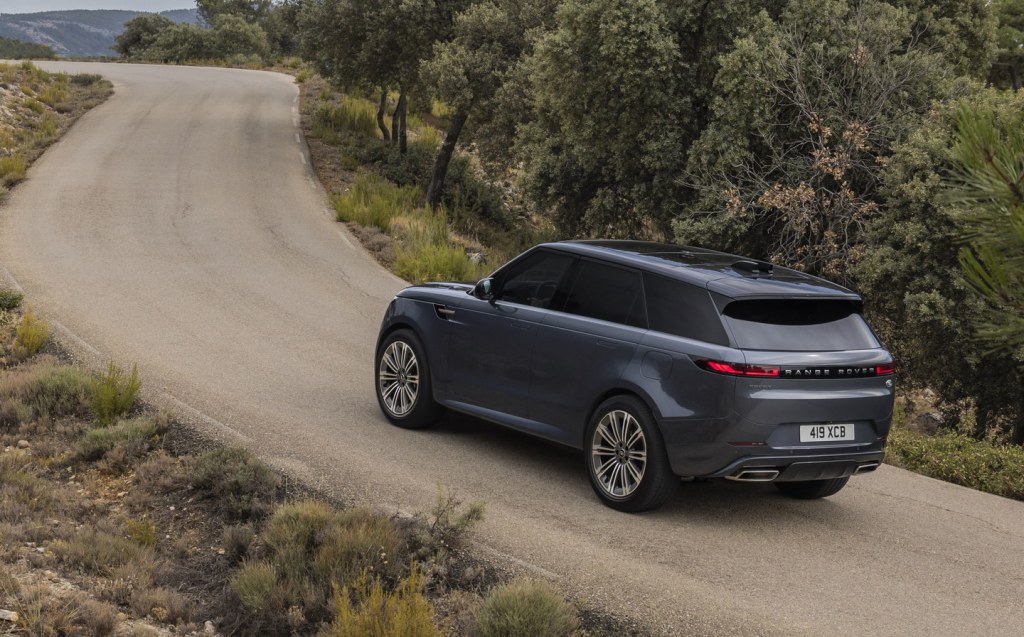
Prices for the new Range Rover Sport start at £80,300 for the entry-level D300 diesel SE. The most-affordable plug-in hybrid, the P440e, is £84,530 in SE form.
The Autobiography model is the entry point for the P510e plug-in hybrid, and that has a starting price of £108,600. There’s a more powerful D350 diesel that starts at £99,245 in Autobiography trim, though, or you can have a 394bhp mild-hybrid six-cylinder petrol version, in Dynamic SE trim, for £87,395.
At the top of the range sits the P530 First Edition model, which uses a BMW-sourced 522bhp 4.4-litre V8 petrol engine, and which is priced at £116,190.
The 2022 Range Rover Sport is on sale now, but as with many manufacturers, Land Rover is warning of long wait times for some versions as it struggles with the supply of components and parts.
Verdict: Range Rover Sport P510e review
In one sense, this Range Rover Sport is exactly like the old one — handsome, smooth, fast and fun to drive. In another way, it’s changed utterly; it can cruise around for extended periods on electric-only power and is therefore capable of returning some surprisingly good fuel economy figures. It’s also packaged much more cleverly than before. So while the styling is subtly updated, there’s a lot going on under the skin to move the game on significantly.
Related articles
- After reading about our Range Rover Sport review, you might be interested to read Will Dron’s extended test of the 2020 Range Rover Sport P400e plug-in hybrid
- You might like to check out the Porsche Cayenne Turbo GT, too
- Or check out Will Dron’s review of the 2022 Range Rover
Latest articles
- Bedeo Defender 110 2024 review: Does electric Landie with in-wheel motors make for a perfect off-roader?
- F1 2024 calendar and race reports: What time the next grand prix starts and what happened in the previous rounds
- BYD Seal U 2024 review: Chinese brand adds plug-in hybrid SUV to its electrified line-up
- New Mini John Cooper Works revs up for Nürburgring 24-hour race debut
- Ineos Grenadier Quartermaster 2024 review: British pick-up is a tough mudder but too flawed to be a real workhorse
- Mini Cooper SE 2024 review: All-new electric hatchback is playing to the crowd
- Jeep Wrangler 2024 review: Impressive off road but you’d still have to be a committed contrarian to buy one
- Around 500 Ford workers in UK could go on strike over cost-of-living pay dispute
- Durham solar car team to take part in 24-hour race with smart tyres and night-driving solution







